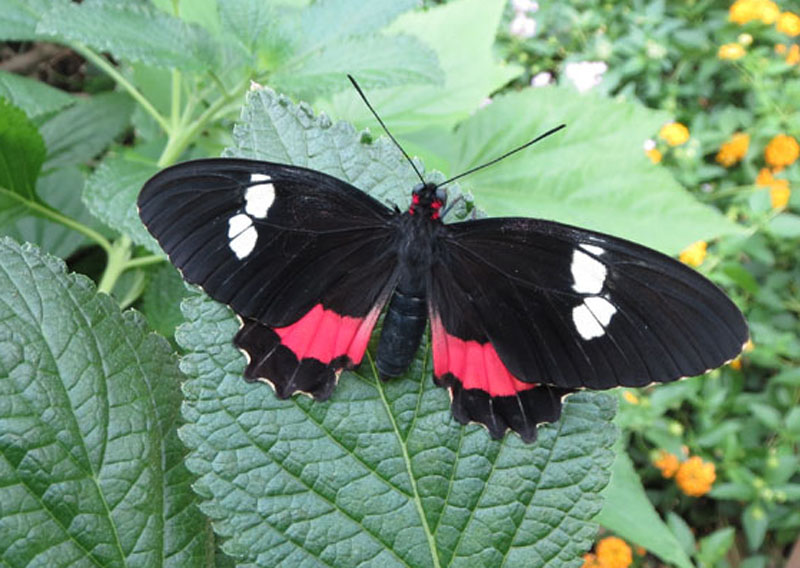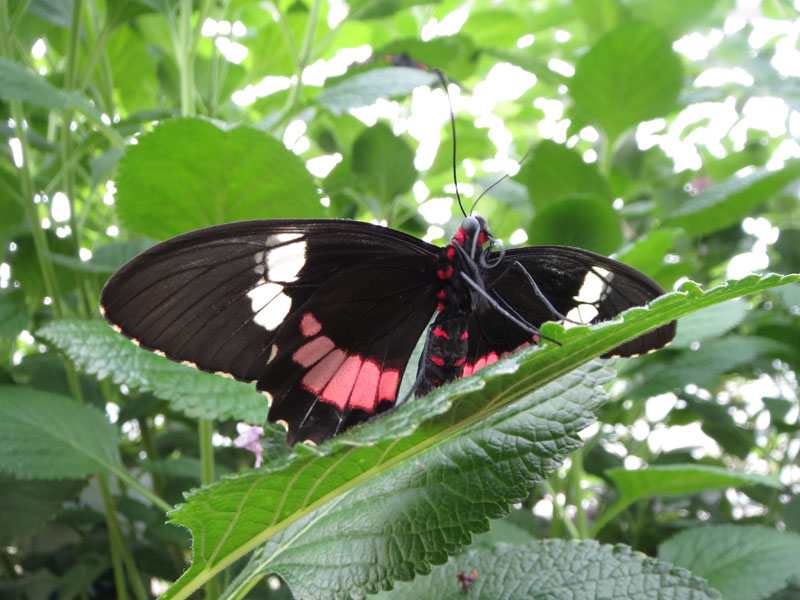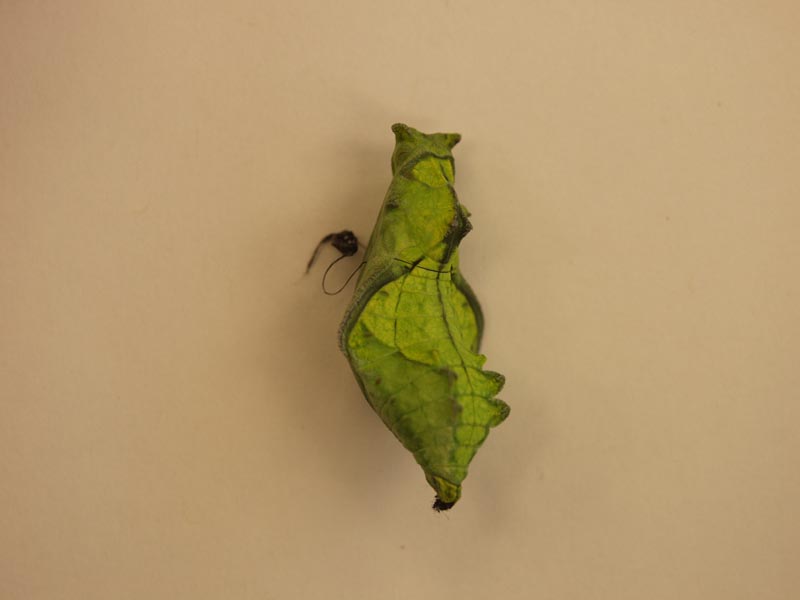


The adults are known to feed from a variety of flowers but they seem to really enjoy flowering bushes and trees.
The origin of the genus Parides and the specie iphidamas is currently unknown.
While they are primarily found in forest habitats they are known to visit the areas surrounding the forest in search of nectar plants.
In the mornings males visit flowers and patrol their territory for females. Once females have mated they spend midday along the forest edge looking for host plants. The eggs are laid singly on the host plant and once the larvae emerge they live a solitary life until they pupate.
The exact time of year for the flights of Common Parides is currently unknown.
Once a female accepts the courtship behavior of a male the two individuals will copulate. Before the two individuals separate the male attaches a sphragis, or plug, to the end of the female’s abdomen. The sphragis insures that other males will not be able to mate with the female and that the genetic material of the first male will be passed on.